Kelp Bass from the Shelter Island Pier in 2013
Species: Paralabrax clathratus (Girard, 1854); from the Greek words para (near) and labrax (a European bass), and the Latin clathratus (latticed, referring to the coloring on the back).
Alternate Names: Commonly called calico bass; also rock bass, bull bass, checkerboard bass, kelp salmon, lockee cod, cabrilla, bucket mouth (a large bass) and dinner bass. Weird name—police car, a name probably invented by an angler who watched too many episodes of Cops. Called cabrilla sargacera in Mexico.
 Ken Jones (me) and a kelp bass I caught in 2010 at the Catalina Mole
Ken Jones (me) and a kelp bass I caught in 2010 at the Catalina Mole
Identification: Typical bass shape. Kelp bass have a single dorsal fin notched between the sections, and the third and fourth spines are of about equal length and taller than the soft-rayed section. Their coloring is brownish or olive on the back, brownish white blotches on the uppersides, tinged with yellow on the underside, and yellow fins.
 Rita and a nice calico from the Cabrillo Mole in Avalon in 2015
Rita and a nice calico from the Cabrillo Mole in Avalon in 2015
Size: Length is to 28.5 inches and weight to 14.5 pounds. Most caught from piers are less than 12 inches in length. The California record fish weighed 14 lb 7 oz and was taken near San Clemente Island in 1958.
Range: Bahia Magdalena, southern Baja California to the Columbia River, Washington. Uncommonly seen north of Monterey Bay.
 DompfaPops and a Catalina kelp bass in 2008
DompfaPops and a Catalina kelp bass in 2008
Habitat: Rocky areas or around kelp, from surface down to 130 feet, but common from 8 to 70 feet. Milton Love, our favorite über-marine biologist, says “kelp bass actually should be called stuff bass, because what they really like is, well, stuff. And they don’t care what the stuff is. Sewer pipes, old tires, oil platforms, chunks of sunken streetcars, it doesn’t really matter. If a kelp bass can stare at it, sort of cuddle up to it and the stuff doesn’t turn around and eat it, that’s all that counts.”
 Dompfa Ben and a large calico from the Cabrilo Mole in 2008
Dompfa Ben and a large calico from the Cabrilo Mole in 2008
Piers: Oceanfront piers with artificial reefs or extensive summer kelp see the most kelp bass. Best bets: Embarcadero Marina Park Pier, Shelter Island Pier, Ocean Beach Pier, Oceanside Harbor Pier, Dana Harbor Pier, Redondo Harbor Sportfishing Pier, Green Pleasure Pier (Avalon), Cabrillo Mole (Avalon), Stearns Wharf (Santa Barbara), Goleta Pier and Gaviota Pier.
 Scott and a kelp bass from the Cabrillo Mole
Scott and a kelp bass from the Cabrillo Mole
Shoreline: One of the main catches for rocky shore anglers in southern California, especially if fishing near kelp.
Boats: One of the main species for boaters in southern California. Most are taken on live bait although lures are increasingly popular.
 Nice “calico” caught by Arcadian at the Cabrillo Mole in 2016
Nice “calico” caught by Arcadian at the Cabrillo Mole in 2016
Bait and Tackle: As with their brethren bass, they are opportunistic feeders grabbing just about anything that looks palatable. They’re also carnivores subsisting mainly on small fish—anchovies, smelt, sardines, perch, queenfish—as well as squid, octopus, crabs, shrimp and worms. Most kelp bass that are caught off piers are caught while anglers are fishing on the bottom for other species. Typical gear is a high/low leader with number 4-2 hooks. Best bait is live bait—anchovies or smelt—followed by strip bait, such as anchovy, mackerel or squid. Live bloodworms, fresh mussels and ghost shrimp will also attract the calicos, as will well-presented artificial lures.
 Jennica and a kelp bass from the Cabrillo Mole in 2012
Jennica and a kelp bass from the Cabrillo Mole in 2012
Food Value: If you are lucky enough to land a keeper-size fish you will have a good meal. Kelp bass have a mild-flavored meat suitable to almost any kind of cooking. They can be used as fillets, baked whole, or cut into smaller pieces for deep-frying.
 Mahigeer lives up to his name (fish catcher in Farsi) with a nice kelp bass from the Hermosa Beach Pier in 2008
Mahigeer lives up to his name (fish catcher in Farsi) with a nice kelp bass from the Hermosa Beach Pier in 2008
Comments: One of the favorite sport fish of southern California anglers but not really a leading species on piers. However, the number of small, immature, and illegal bass found at times around the Green Pleasure Pier at Avalon is almost unbelievable. An interesting discussion took place one week on the Pier Fishing in California Message Board. The question was asked as to which fish was a better fighter—kelp bass or largemouth bass? With one exception, those anglers who have caught both species gave the nod to the kelp bass. The lone dissenting vote did not rule in favor of largemouth bass. He simply said that calicos (kelp bass) fight differently in open water than they do around kelp. He felt around cover they fight incredibly strong, in the open water they fought somewhat less, likening it to the fight of a smallmouth bass which he still thought was superior to that of a largemouth.
A kelp bass I caught from the Goleta Pier in 2011
Kelp Bass at the Cabrillo Mole in 2015. She doesn’t look too happy!
 This young lady was at the Mole with her dad in 2015 and she KNEW how to fish!
This young lady was at the Mole with her dad in 2015 and she KNEW how to fish!
 Angel and a nice 22-in kelp bass from the Crystal Pier in 2015
Angel and a nice 22-in kelp bass from the Crystal Pier in 2015
 A nice-sized kelp bass I caught way back in 1967
A nice-sized kelp bass I caught way back in 1967
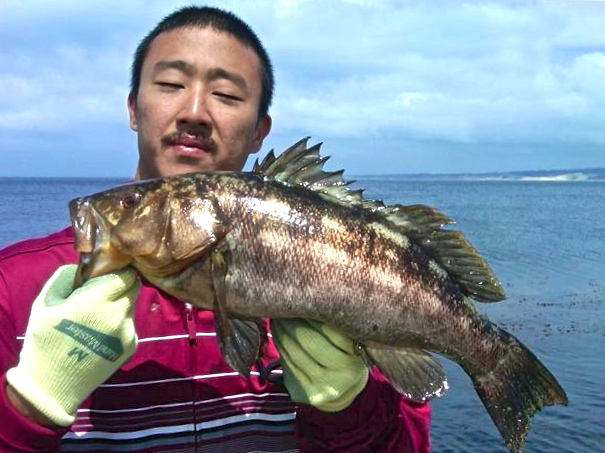 A large kelp bass taken from the Monterey Coast Guard Pier in 2010
A large kelp bass taken from the Monterey Coast Guard Pier in 2010
One of our all time favorite people and anglers — GDude (James Liu) with a small kelp bass from the Cabrillo Mole in 2002
A nice bass from the Goleta Pier in 2005
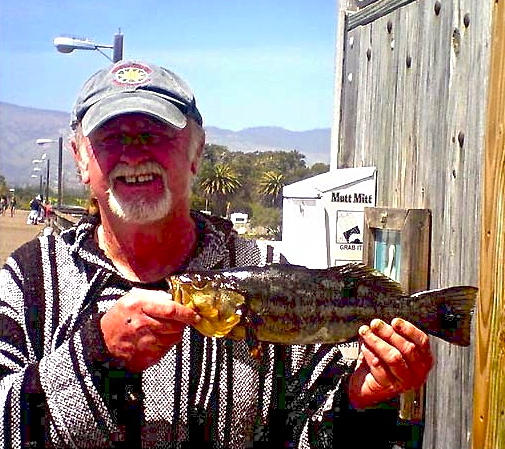 Pierhead (Boyd Grant) and a 16-in kelp bass from the Goleta Pier in 2010
Pierhead (Boyd Grant) and a 16-in kelp bass from the Goleta Pier in 2010
 Marcus and a kelp bass from the “Mole” in 2003
Marcus and a kelp bass from the “Mole” in 2003
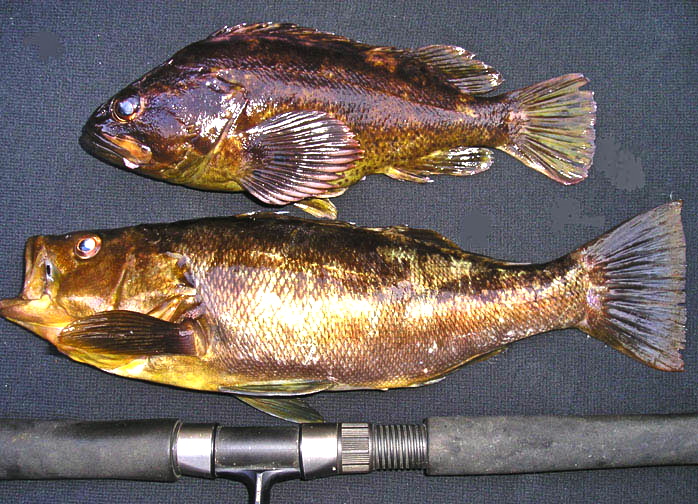 Grass rockfish (top) and kelp bass (bottom) from Goleta in 2006
Grass rockfish (top) and kelp bass (bottom) from Goleta in 2006
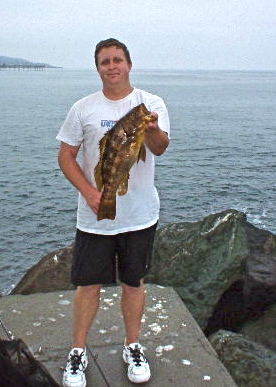 Nice calico caught by SDFisherman from the Mission Bay Jetty in 2007
Nice calico caught by SDFisherman from the Mission Bay Jetty in 2007





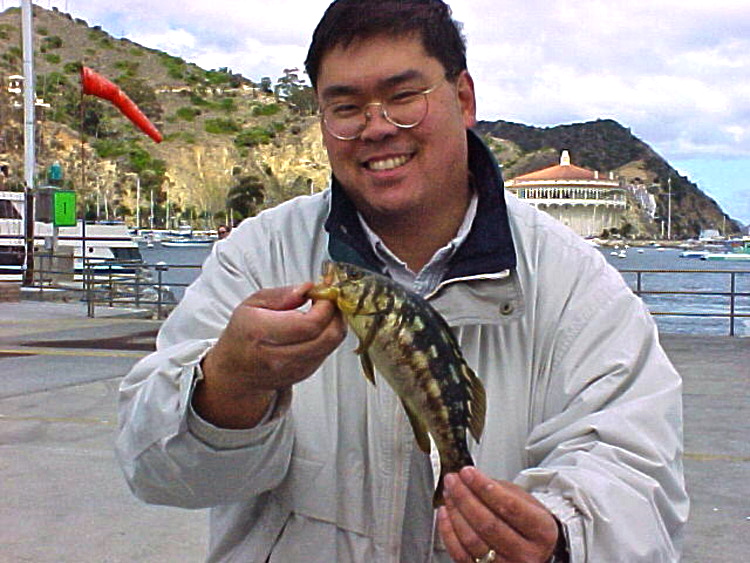















Thank you for the wonderful post